Search Images
Browse Content (p. 391)

Image
James Lacey
James Lacy, author of Rome: Strategy of Empire.
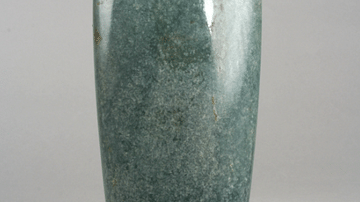
Image
Olmec Jade Celt
A polished jade celt or ceremonial axehead from the Olmec civilization of Mesoamerica. The Olmec ritually buried celts to appease the gods and guarantee future harvests, particularly of maize which jade was associated with. (Metropolitan...
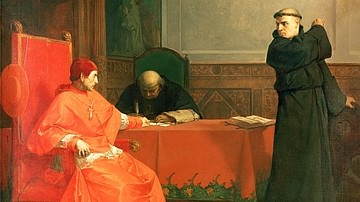
Image
Martin Luther in Front of Thomas Cajetan
The painting Martin Luther in Front of Thomas Cajetan by Belgian painter Ferdinand Pauwels (l. 1830-1904), depicting the 1518 disputation between Cardinal Thomas Cajetan and Martin Luther in Augsburg.
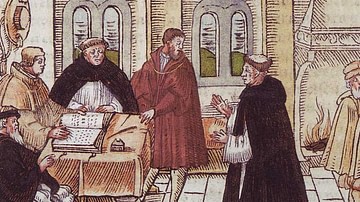
Image
Meeting of Martin Luther and Cardinal Cajetan
A reproduction of a 1557 print of Martin Luther (on right approaching desk) and Cardinal Thomas Cajetan (on left, holding open the book) depicting their 1518 disputation at Augsburg.
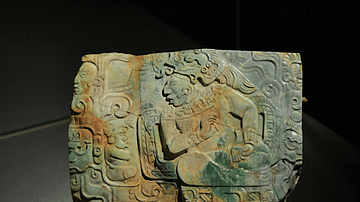
Image
Maya Jade Plaque
A Maya jade plaque from Nebaj, Guatemala. Created around 600. (National Museum of Guatemala)
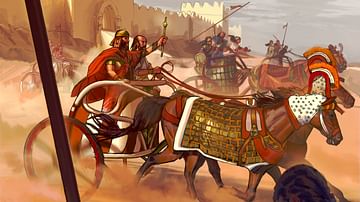
Image
Hittite War Chariots
Artist's impression of ancient Hittite war chariots leaving a Hittite city for battle. The Hittites were present in Anatolia from around 1700 to 1200 BCE. Created by Amplitude Studios for the video game Humankind.
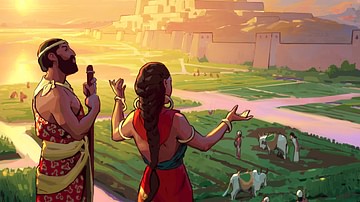
Image
Harappan Civilization (Artist's Impression)
An artist's impression of Harappa and the Indus Valley Civilization, depicting fields and cities in ancient India. Created by Amplitude Studios for the video game Humankind.
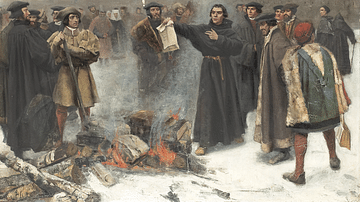
Image
Martin Luther Burning the Papal Bull
A c. 1885 painting by Karl Aspelin showing Martin Luther (l. 1483-1546) burning the papal bull Exsurge Domine in December 1520.
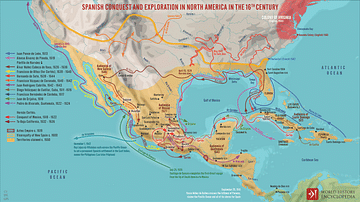
Image
Spanish Conquest & Exploration in North America in the 16th century
A map illustrating Spain’s drive to expand its empire following the 1492 Reconquista of the Iberian Peninsula and Columbus's discovery of America. Inspired by tales of land and instant riches, thousands flocked to the New World with hopes...
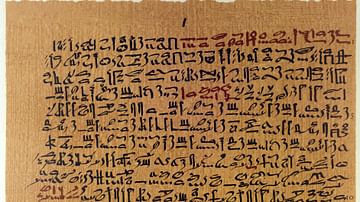
Image
Reproduction of the Ebers Papyrus
A reproduction of the Ebers Papyrus (c. 1550 BCE), an Egyptian medical text.